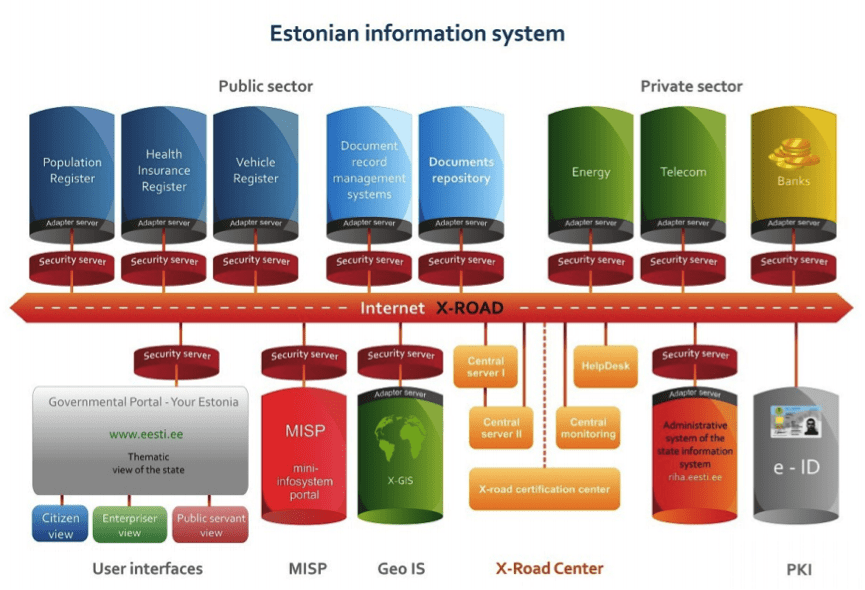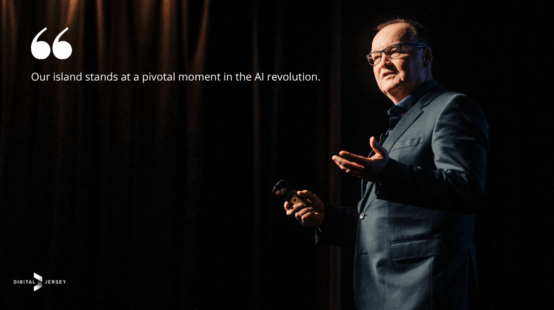
I’ve been the CEO of Digital Jersey for around six months now, and this will be my final blog… just joking! I’m staying, for good. This place, for all of its quirky island ways, is wonderful. The community is welcoming and passionate, the government is engaged and the potential for growth and innovation is undoubted. However, there remains an elephant in the digital room and it’s called ‘eGov’. I was very aware when I applied for the job in Jersey that a huge amount of debate had gone on surrounding eGov – some of it pretty heated! So my intention with this blog is not to add fuel to the fire or an unconstructive critique, but share my views on what the main priorities should be in terms of our next steps. This brings me to Estonia – the world leader in eGov, despite its relatively small population of 1.3m which makes them think they are a small country! While people still have the option to do things offline, just some of the characteristics of Estonian eGov include:
- 96% of tax returns done online
- 1/3 of the population used to be online 10 years ago – now it’s 90%
- Rapid Wi-Fi connections are available in more than 1,007 public places
- Since 2005, citizens have been able to vote in general elections online
- Registration of a company takes 18 minutes via the e-business portal
Paying attention to Estonian eGov strategy is nothing new for Jersey. In 2014, a delegation (led by Digital Jersey) went to see what was going on in Estonia in terms of eGov to find out what we could learn from them. My understanding is that they returned with a huge amount of enthusiasm, a lot of ideas and an intention to progress them. Unfortunately, a combination of factors (general elections, budget pressures and changes of departmental structure) meant that little progress was made, but over the last six months there has been renewed vigour, political commitment and energy to get eGov operational in Jersey.
With that in mind, I asked Estonia to pay us a visit and they were kind enough to say yes. Specifically, we were visited by Siim Sikkut, Estonia’s Digital Policy Adviser, who shared some of his lessons about eGov in Estonia and gave us some valuable thoughts about what we should be prioritising in Jersey. While some of this is already progressing, for the sake of completeness, this is my ‘dream list’ for Jersey’s eGov, with apologies to Estonia.
1. Digital identity
This is the key, the lynchpin, the vital piece of work that we need in order to enable every aspect of eGov in Jersey to work: a digital identity for our citizens. Effectively, this is a highly secure private key (currently in the form of an encoded ID card in Estonia but can also work from a mobile phone without a card) that corresponds to a public key. This means that people can sign or authenticate their data for nearly anything online, from tax returns to voting. Digital signatures protect citizens, speed up the process of government and business and reduce frustration for the individual. They also mean that you know exactly what is happening to your data at any moment, as everything is tracked.
2. Connected databases
Connecting different parts of government together is powerful. By using an X-Road infrastructure (see diagram), which each department or part of government is plugged into, there is simply no duplication of effort. This creates efficiency, saves costs and improves depth and quality of understanding in terms of citizen needs and behaviour. Using an X-Road (or as we have been calling it here, an Enterprise Bus) to pull together legacy systems is the quickest way for Jersey to move forward with eGov.
3. Controlled access
Of course, once our digital identity is in place, and that data is all connected up, access to data still needs to be controlled. Estonia currently operates on a ‘need to know’ and ‘allowed to know’ basis. For example, your doctor ‘needs to know’ your medical data, but your spouse doesn’t – although you can ‘allow’ them to access it if you wish. This is a very simple example of this policy in action, but there are more innovative ways to use it. Siim gave the example of tax returns. To paraphrase him, he pointed out that if citizens “allowed” the tax office to access their bank accounts, there could potentially be no need for tax returns – they could be automated. Efficiency aside, the mental health benefit of this alone would be incredible!
4. Absolute transparency
With digital ID, connected data and controlled access, the next part of the eGov dream list is transparency. Estonia audits the citizen data it collects, as is normal for most governments, but the way that it uses the X-Road means that a log book function tracks every single interaction of its citizens’ data. That means that you can always see who has been viewing your data and when, and highlight anything that you aren’t happy with. Ultimately, it’s about more control for the citizen. It was amazing to see Siim bring up on a screen in Jersey all the information held on him by his Government, even showing who had accessed his records over the past year.
5. Open data for the greater good
Although personal data is totally controlled by the individual, Estonia believes that non-personal data should be used for the greater good. For example, while only ‘need to know’ individuals such as a doctor, yourself and those you give permission to could see your medical records to know you had a type of condition, the fact that X number of people with X types of demographic markers have that condition should be open. So when Jersey is developing an approach for how we use our health data, we should be considering one that says, while personal records are private, health trends are not.
Conclusion
For me, the best thing that Siim said (repeatedly) was “keep it simple”. He gave the example of the retirement age in Estonia being 63 and people needing to apply for their pension. While in the process of making an application online, they realised that if the government has someone’s date of birth and their past tax records, why not simply just start paying their pension on the day they turn 63?
As Jersey progresses in its eGov journey, this is the most important lesson (I think) that we can learn from Estonia. Every time we are about to change something, we need to ask ourselves, “is this even necessary?” and “could it be automated?”. If we do this, we have real potential to create an exceptional, Estonian-inspired, Jersey-innovated system of eGov. We may even be able to get the Estonians to help us!



